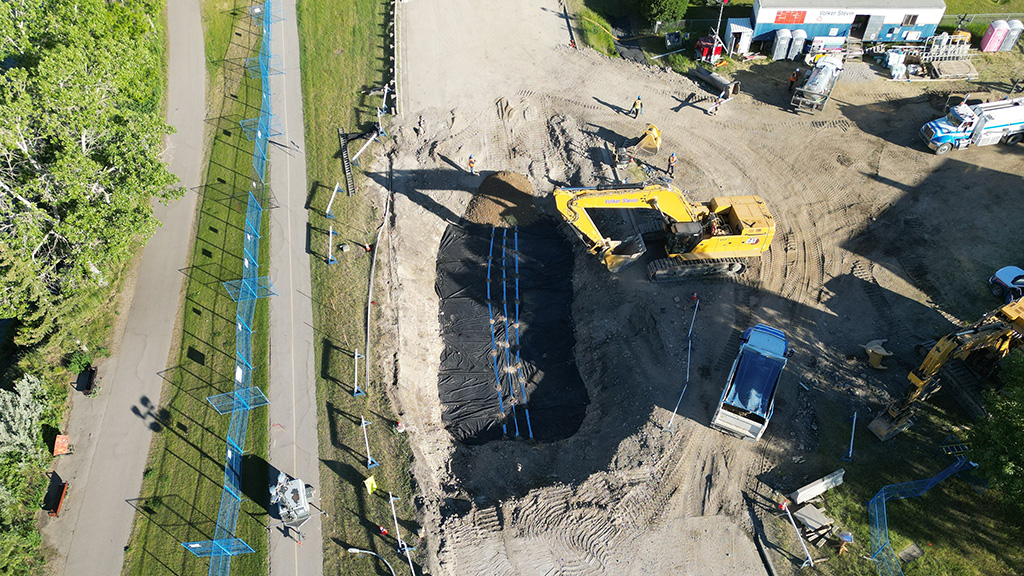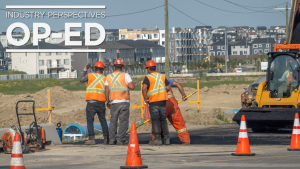According to the International Institute for Sustainable Development, Canada has an infrastructure deficit of somewhere between $150 billion and $1 trillion.
In Western Canada alone there are many examples of old and tired municipal infrastructure that’s not up to snuff.
Winnipeg expects to pay up to $1 million to replace some worn-out bearings on the decrepit Arlington Bridge. The work is expected to prevent the structure from falling onto the rail yard below it, not to help reopen it.
In Vancouver, it was recently announced that nearly 150 kilometres of the city’s sewer mains are more than 100 years old, well past the upper limit of what is generally considered the typical lifespan of sewer pipes.
And then there is Calgary’s recent watermain break.
On June 5, Calgary was put under a water emergency after a major feeder main in the city’s northwest fractured, flooding streets and reducing water levels.
The pipe was eventually fixed and normal water service returned in time for the opening of this year’s Stampede on July 5, a month after it broke.
Joel McAllister, senior project manager in the Abbotsford, B.C. office of Onsite Engineering Ltd., says Canadian water systems have been long underfunded and need new investment “everywhere.”
“Much of the pipe installed is old and has reached the end of its useful life,” says McAllister. “As pipes age, especially pipes with steel in them, they are prone to corrosion and possible eventual failure.”
Daria Crisan, senior research associate in the school of public policy at the University of Calgary, says the main issue with infrastructure is maintenance.
“The watermain break was a real eye-opener for all levels of government,” says Crisan. “We found out that some infrastructure is aging faster than we thought. A pipe that was supposed to last 100 years failed after just 50 years. And there might be more pipes in Calgary like that.”
Crisan says pipes need to be monitored more closely and replaced sooner.
“We must do a better job,” she says. “An audit of water systems across Canada is needed right away. Calgary already does a good job of monitoring its water system. If it can happen here, it can happen anywhere.”
Bill Black, president of the (CCA), says the city’s water crisis has been a learning experience for the construction industry and the community as a whole.
“We know now there’s a lack of redundancy in the Calgary water system,” says Black. “And we’re more aware of the risks of our critical infrastructure failing on us. So many different elements of life can be impacted if, for example, a watermain breaks.”
On a more positive note, Black says, Calgary’s construction industry also learned how to reach out to the city and enlist its assistance when it was needed during the emergency.
In addition to underground pipes, Calgary, and Alberta as a whole, need to spend more on streets and roads, he says.
“More money needs to go into preventive road maintenance,” says Black.
Effective road maintenance must last for more than one election cycle.
“Stable, continuous investment in infrastructure is what’s needed,” he says. “All three levels of government need to commit to long-term investment in infrastructure maintenance that cannot be shut down by politicians thinking short-term, almost like law.”
Ron Glen, CEO of the (ARHCA), says there should be a legislated reduction of highways in poor condition.
ARHCA is proposing the creation of an independent agency, the Alberta Highway Trust Company, that is responsible for road infrastructure management, project selection and procurement of road construction and maintenance services.
“The money that has been spent on infrastructure has not been invested efficiently,” says Glen. “Governments don’t plan according to long-term budgets. The short-term government budget cycle doesn’t work for maintaining infrastructure. The idea of the Alberta Highway Trust is to produce a long-term performance contract with the government.”
Jack Mintz, president’s fellow in the school of public policy at the University of Calgary, says the imbalance between the infrastructure we need and the infrastructure we have could be mitigated by changing the way water, sewer and roads services are priced.
“If we had a proper pricing mechanism for public infrastructure, one that included the maintenance of existing capital assets, then investors, such as pension funds, would be happy to put money into building infrastructure if they knew they’d get a decent return,” says Mintz.





Recent Comments
comments for this post are closed